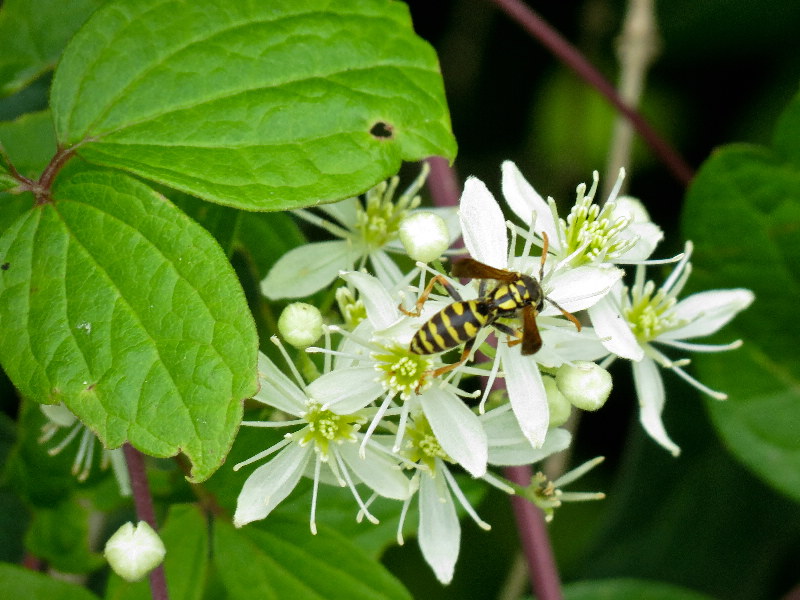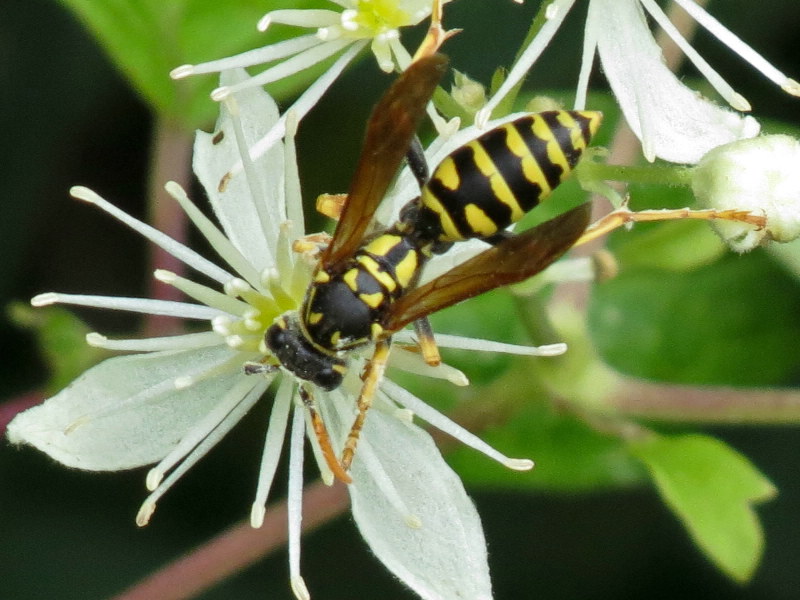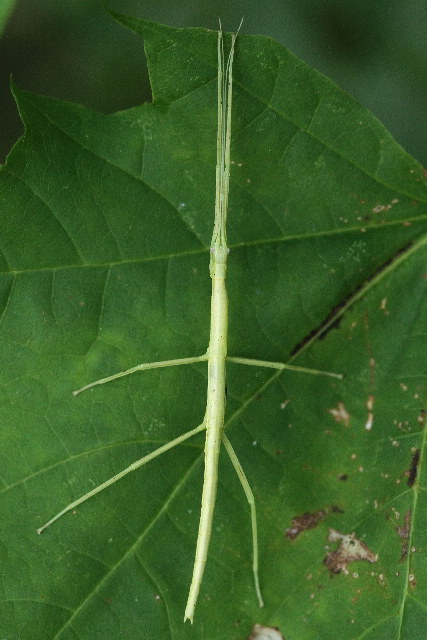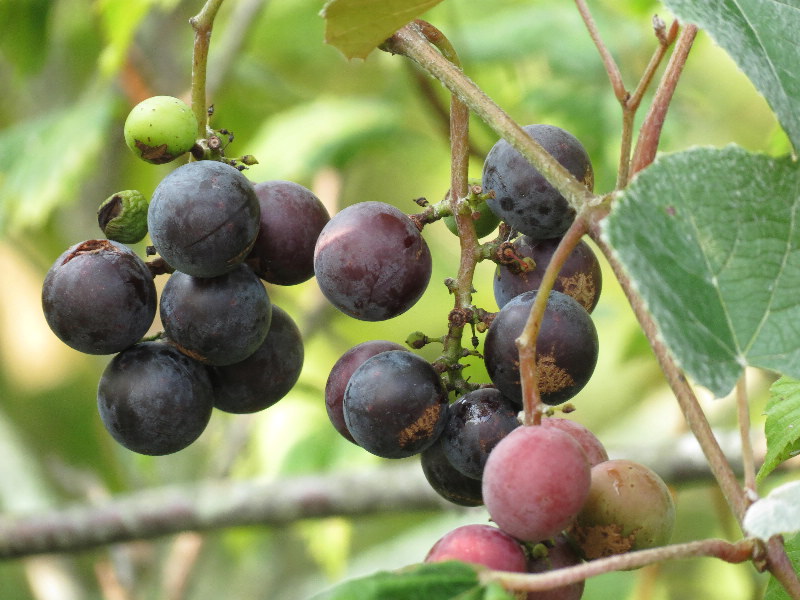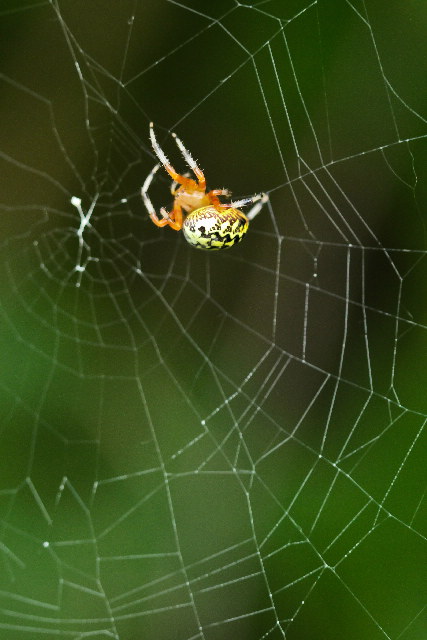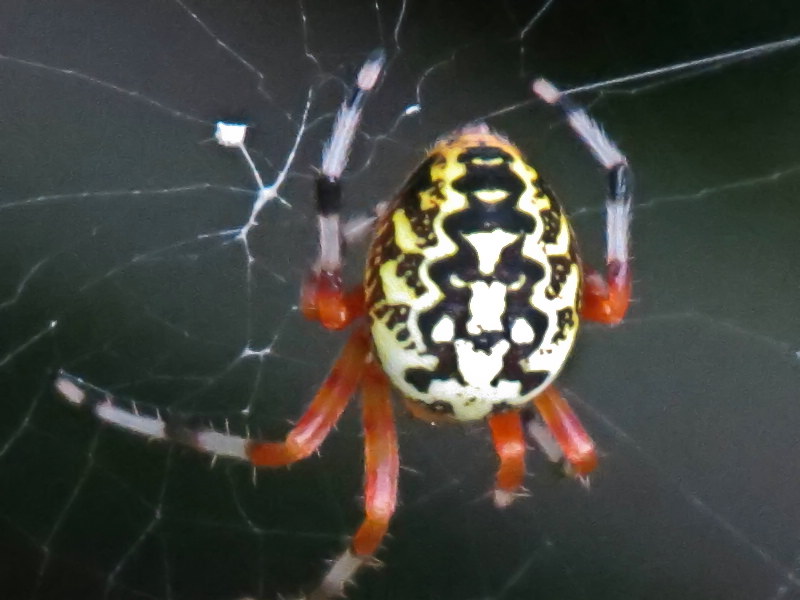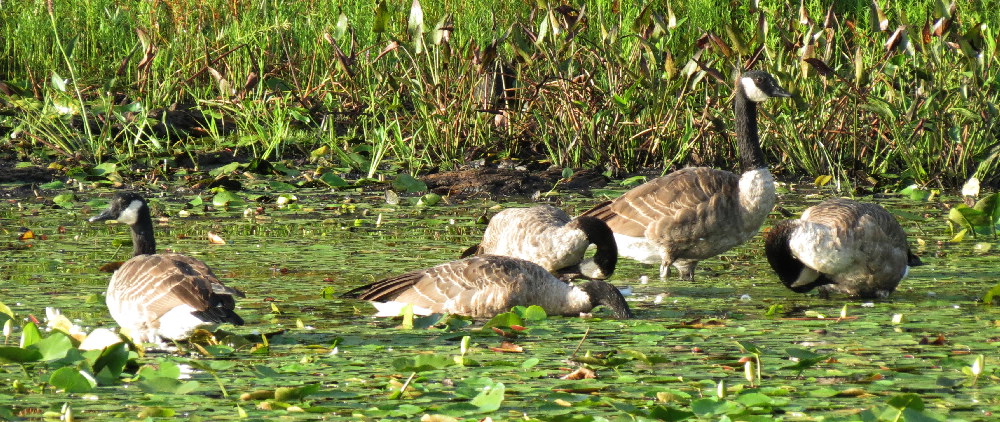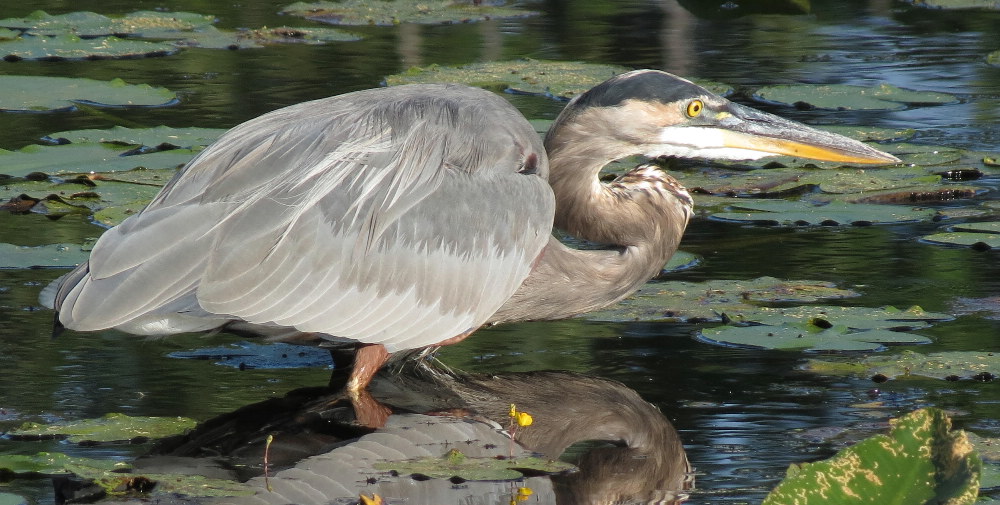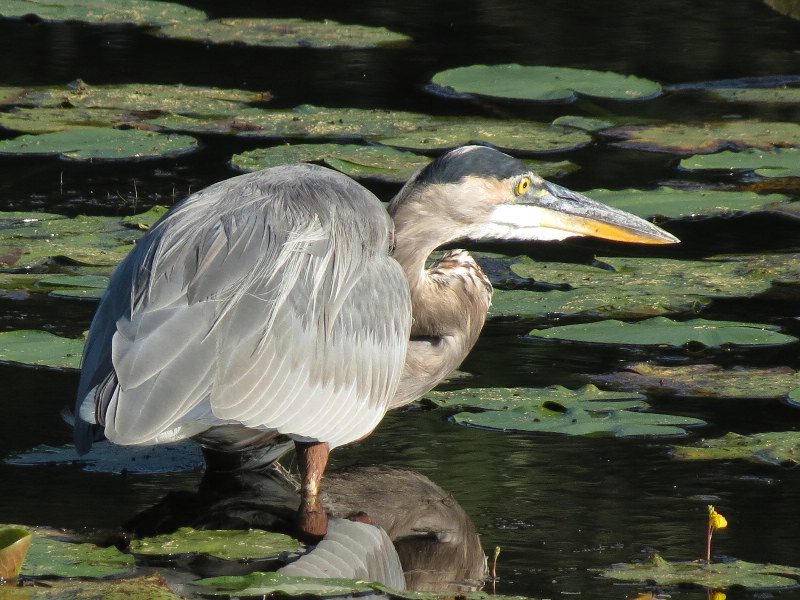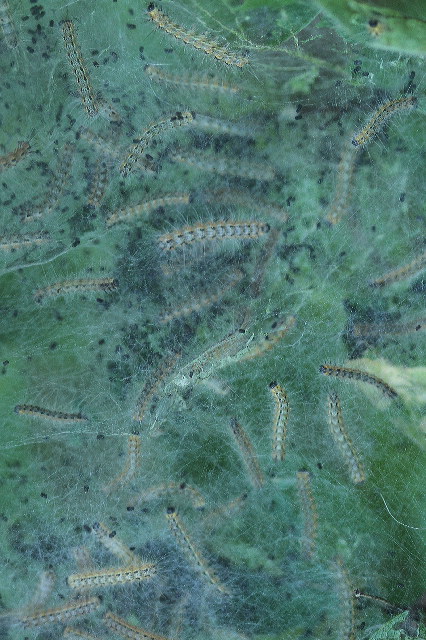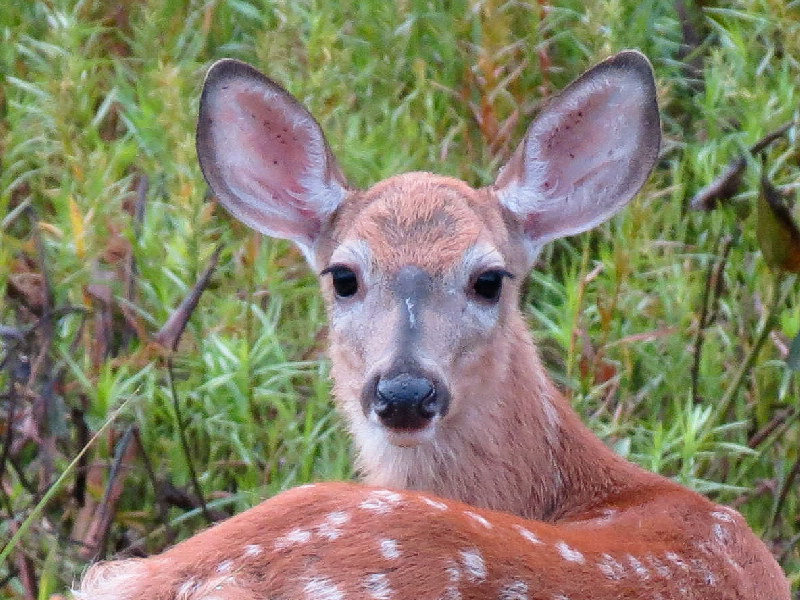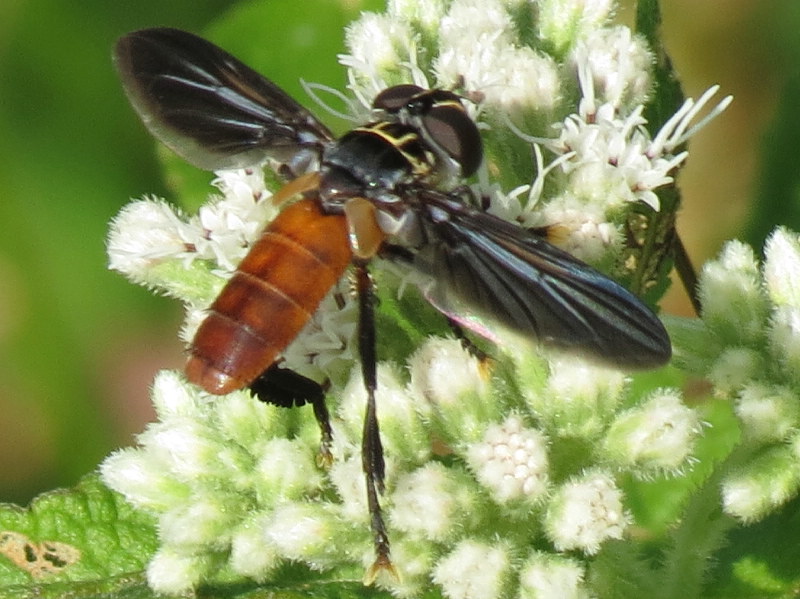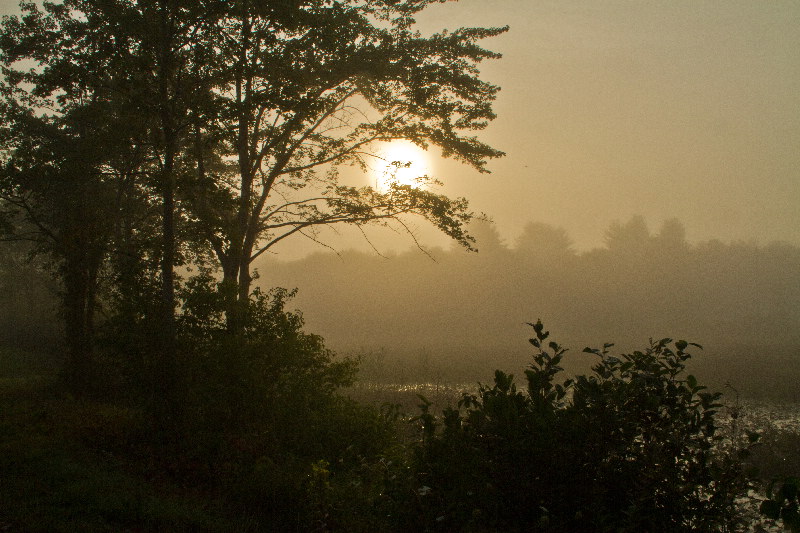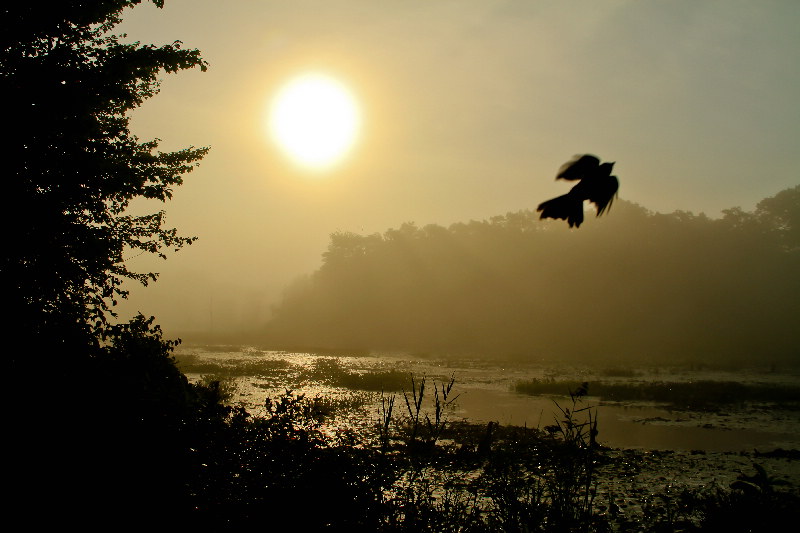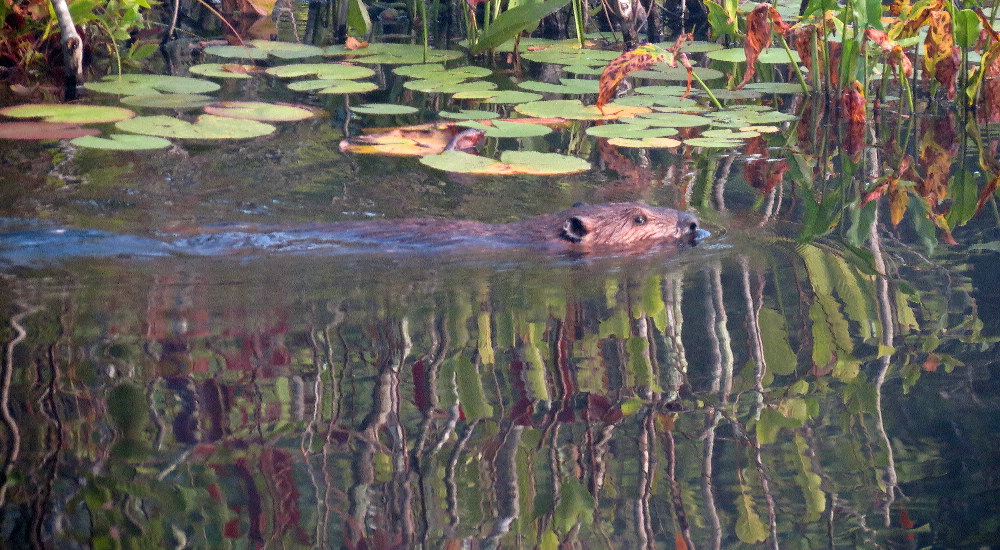Along the Air Line... 2012 - Summer, Part 5 The Air Line Trail in Eastern Connecticut - Stan Malcolm Photos |
mHome Page Stan's FlickR Albums |
August 14th. The very odd caterpillar of the White Furcula moth (Furcula borealis, Family Notodontidae). The long appendages at the back are the last pair of abdominal prolegs which it can swish around like a horse's tail if disturbed. http://mothphotographersgroup.msstate.edu/species.php?hodges=7936 When I spotted it on a half-eaten cherry leaf, it just looked like a dried, shriveled up piece of leaf. |
The long appendages at the back are the last pair of abdominal prolegs which it can swish around like a horse's tail if disturbed. |
|
August 15th. A bedragled Northern Pearly Eye (Enodia anthedon). |
Summer Azure (Celastrina neglecta). |
Virgin's-bower or Wild Clematis (Clematis virginiana). |
A Vespid wasp (Family Vespidae) on the VIrgin's-bower. |
|
August 17th. What's this? |
It seems to have just four legs. |
Ah, the front pair are stretched out... |
...stick-like. It's a Stick Insect (Family Phasmidae). |
Grapes (Vitus sp.) are coloring up... |
...but aren't likely to be sweet for a few more weeks. |
One of two White-tailed Deer fawns (Odocoileus virginianus) at the far end of the marsh. |
Check out those eye lashes! |
An Eastern Phoebe (Sayornis phoebe) posed, resting while searching for its supper. |
|
|
|
|
Remarkable that this bedragled Great Blue Skimmer (Libellula vibrans) has long escaped the beaks of Phoebes and Tree Swallows. |
A Green Stink Bug (Acrosternum hilare). |
August 18th. A female Marbled Orb-weaver (Araneus marmoreus)... |
...busy spinning her web. |
|
(My favorite shot of her.) |
|
August 19th. Light specks across the marsh... |
...turned out to be a group of ten or more Canada Geese (Branta canadensis).. Here are five of them, feeding and grooming. |
August 20th. A petite yellow flower of a Bladderwort (Utricularia sp.). Oh, and a Great Blue Heron (Ardea herodius) in the background. |
|
Another Heron... but not a Herring as some trail visitors assert. |
A pair of Black Ducks (Anas rubripes). |
Most likely an immature caterpillar of the Leopard Moth (Hypercompe scribonia). |
Huffin' it! |
Mature beans of Groundnut (Apios americana). |
The silken nests of Fall Webworm (Hyphantria cunea) cover the tips of branches, versus tent caterpillars which in early spring make nests in the crotches of trees. Fall Webworm nests may be unsightly, but because they eat leaves at the end of the season, the caterpillars have little effect on trees. |
This view looks almost like serpentine marble - if you ignore the caterpillars and their frass. |
August 21st. The two fawns were back. |
|
|
|
A fly I didn't recognize, seen at the Cranberry Bog trail head in East Hampton. |
Thanks to BugGuide.net, I was able to identify it as a male Feather-legged Fly (Trichopoda pennipes) in the Tachinidae family. You can see the feathery arrangement oif setae on the fly's hind tibia in this photo. |
According to Wikipedia, these flies are parasitic on green stink bugs (Pentatomidae) and leaf-footed bugs (Coreidae). They are found in both North and South America and have been introduced into Europe to control stink bugs. |
August 23rd. Fifty-eight degrees and foggy over the marsh. |
|
|
|
(Tweaked in Adobe Lightroom.) |
A very different view looking away from the sun; still foggy though. |
Pickerelweed and Pond Lilies. |
|
Grey Squirrel (Scurius carolinensis). Looks like he's eating a Russula sp. |
First Beaver (Castor canadensis) I've seen in awhile. (I also caught a glimpse of what might have been a Pied-billed Grebe, but it quickly hid.) |
|
|





